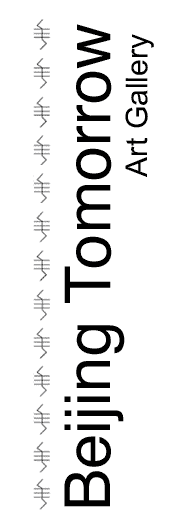 |
Daniel A. Henderson is an entrepreneur, inventor and sculptor who has been granted
26 U.S. Patents covering telecommunication systems and devices, particularly picture and video messaging to wireless devices.
His prototype wireless Picturephone was received in the National Museum of American History at the Smithsonian Institution in October 2007. He has experience in the overseas manufacturing of his own products and has successfully founded and managed several technology companies. Henderson’s companies have frequently been covered by the Wall Street Journal and business and legal publications.
Henderson has also been interviewed by National Public Radio as an industry pioneer
for the market introduction of the first Apple iPhone.
Henderson began his career with IBM, and was subsequently invited to work with
Kazuo Hashimoto, who is known as the inventor of Caller ID and the modern answering machine. He also worked with Jack Kilby, inventor of the integrated circuit, during his tenure with the Hashimoto Corporation.
His father, an artist and award-winning creative director, exposed Mr.Henderson to art early on. He spent his youth painting signs, sketching, wood working and restoring cars. This early interest in form and design and background as a technologist led to his focus on sculpture.
Henderson is involved in numerous other philanthropic efforts including The Tech Museum of Innovation in San Jose CA, the Cliburn Foundation in Fort Worth TX, and the Digital Stone Project in Hamilton NJ.
Mr. Henderson earned a BS in Business from Southern Oregon University in 1984, where he also received the 1999 Distinguished Alumni award.The Daniel A.
Henderson computer lab was named after him in the Hannon Library at Southern Oregon University a few years ago. He currently serves on the Foundation
Board for SOU since 2001 and also the Board of Visitors for the Dorman Honors College at the New Jersey Institute of Technology.
He resides in Fort Worth, Texas.
|
|
ARTIST STATEMENT:
My art explores the viral allure of technology and its unintended consequences.
I am a sculptor and an inventor who developed the wireless picturephone. Invention, like sculpture, is an artistic endeavor. Although the two disciplines utilize different mediums of expression, both share the ability to affect our perception and how we interact. My sculpture memorializes the impact that art and technology have on humanity.
In our lifetime, we have witnessed the birth of the microchip, the Internet, the ATM, video games, caller ID, the personal computer, the digital camera, and the portable cellular telephone. These ingenious machines and systems have conquered great human challenges, but not without unintended consequences.
In 2007, a prison guard utilized a cellular telephone to video the execution of Saddam Hussein, and it quickly spread across the world via the Internet, easily seen by our children. This event propelled me to think deeply about the use of technology and how it connects us interculturally yet somehow divides us interpersonally.
We should consider the ethics of products manufactured with toxic disposable materials. In a world of virtual reality with e-mail, text messaging, and Internet shopping, we are confronted with the decline in face-to-face communication, the erosion of community, and the expectation of instant gratification. I want people to talk about technology — rather than merely use technology to talk.
The scale of the sculpture both amplifies the form and functional design elements of the original objects while creating tension for the viewer unable to use them. The permanence of iconic products sculpted in stone represents the connection with the natural world and contrasts with the temporality of technology and the materials they are built from. The work is symbolic of the Art of Invention and the permanent alteration to the human landscape.
丹尼尔·汉德森 (Daniel A. Henderson) 是一位美国企业家、发明家和雕塑家。获得的电信系统与设备发明专利有26 项之多, 尤其擅长无线设备的图像和视频短信技术。
2007年10月, 汉德森发明的“可视电话原型”被美国国立历史博物馆的史密森尼学会收藏。汉德森还涉足海外办厂、 生产自己的产品, 还成功地创办和经营着几家科技公司。他的公司也多次被《华尔街日报》和其他商业、法律媒体报 道。他成功的将第一代iPhone推入市场, 并因此接受了美国全国公共广播电台的采访。
汉德森最早在IBM公司任职, 后与“现代答录机”和“电话来电显示”的发明者桥本和夫 (Kazuo Hashimoto) 先生一 起工作。随后在桥本公司任职期间, 他还曾与电脑芯片的发明者杰克·齐比 (Jack Kilby) 一起共事。
汉德森的父亲是一位艺术家, 家庭环境使汉德森很早就开始接触艺术。年轻时代的他就经常绘画、素描、做木工和修 汽车。早期对图形和设计的兴趣, 加上他的技师背景, 促使他走上了雕塑之路。
汉德森积极参与慈善活动, 包括加州圣何塞的科技发明博物馆、德克萨斯州沃思堡的克莱本基金会、新泽西州汉米尔 顿市数字石雕组织在内的机构都曾接受过他的捐赠。
1984年, 汉德森获得南俄勒冈大学理学士学位, 于1999年获该校杰出校友奖。几年前, 俄勒冈大学将Hannon图书馆的 计算机实验室命名为丹尼尔·汉德森实验室。他目前出任南俄勒冈大学基金会的董事会成员, 以及新泽西理工学院荣 誉学院监事会成员。
汉德森与家人一起现居美国德克萨斯州的沃斯堡。
艺术家的话:
我的作品旨在发掘科技的魅力所在, 并探究科技给人类带来的不可预知的结果。
除了雕塑家的身份之外, 作为无线彩信技术的发明者, 我发现发明与雕塑类似, 都是艺术探索。尽管这两种行为使用 着不同的介质, 它们却都在影响着我们的感性世界, 也影响着人类的沟通方式。我的雕塑作品就是要记录艺术与科技 带给人类的影响。
在这个时代中, 我们目睹了芯片、互联网、ATM机、电子游戏、来电显示、计算机、数码照相机、手机等科技产品的 先后诞生。这些精妙的机器和系统为人类解决了许多大难题, 却也带来了许多预想不到的后果。
2007年, 一个监狱看守用手机视频录下了萨达姆·侯赛因的死刑执行过程, 这段视频很快就通过互联网传播到了全世 界, 甚至连孩子们也能轻而易举地看到。这件事让我陷入深思:我们该如何正确地使用科技?科技是如何把有着不同 文化背景的人们联系在一起, 然而又是如何加大了人们之间的距离呢?
科技产品的生产需要大量的塑料及金属材料, 而这些产品却有着惊人的淘汰速度。我们应当对这一现象所反应出的道 德问题进行深思。电子邮件、短信以及网购所带来的虚拟现实使人们面对面的交流越来越少了, 各种社团的数量也越 来越少了, 人们都期望能立竿见影地解决问题。对我而言, 更希望人们能够对科技自抒己见,而不仅仅是使用科技手 段来交流。
我的雕塑放大了原型的尺寸和大小、改变了其原本的功能, 这种使用性的消失使得人们的看法发生了改变。这些具有 时代意义的产品对人类的影响是永恒的, 以亘古不变的石头材质进行雕刻, 体现了作品与自然界之间的内在关联;与 之相反的, 现代科技和生产材料是具有时效性的。我的作品是关于发明的艺术, 寓意着创新科技给人类图景带来的终 身改变。 |
|





